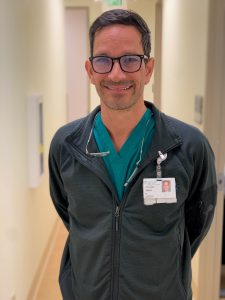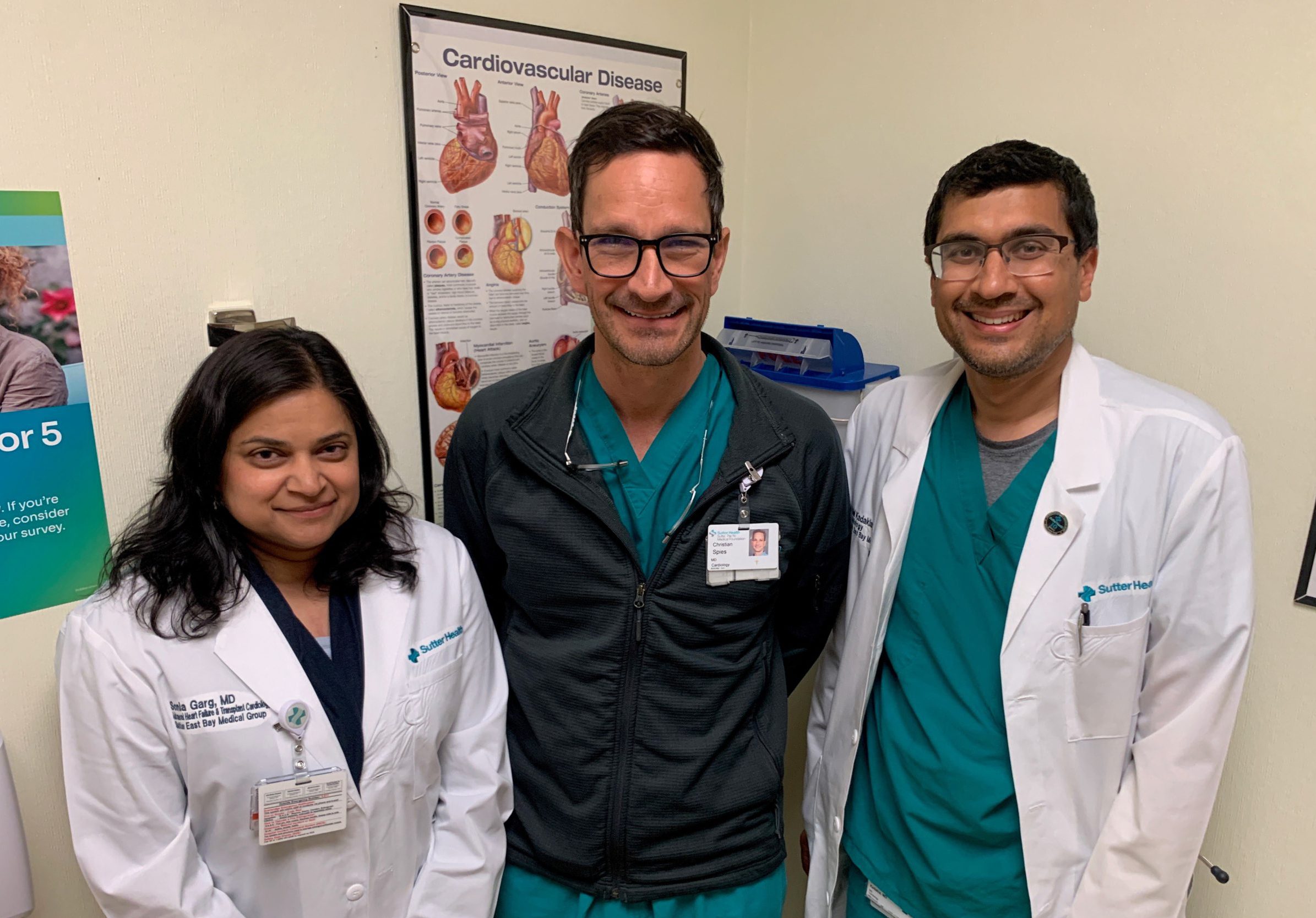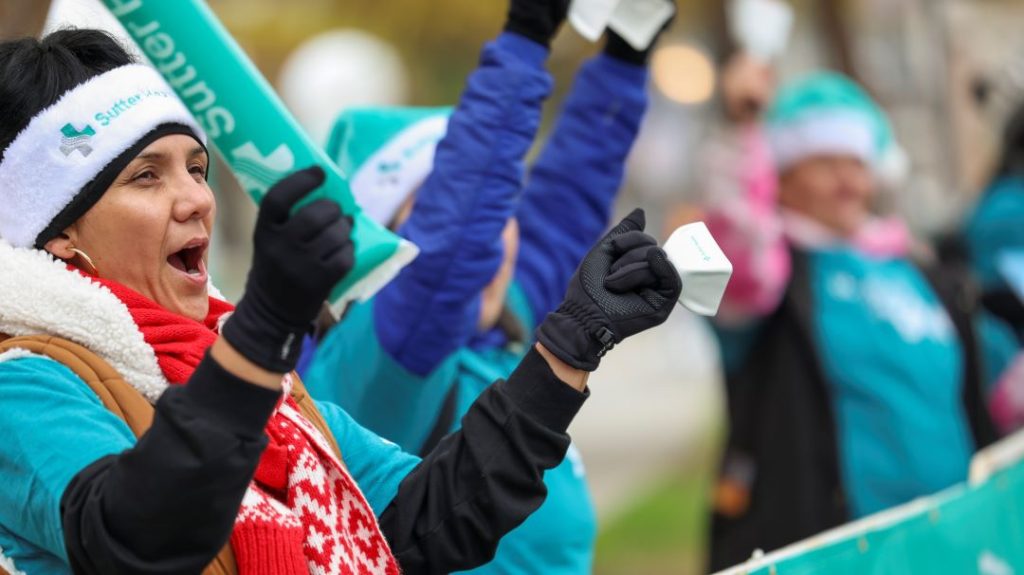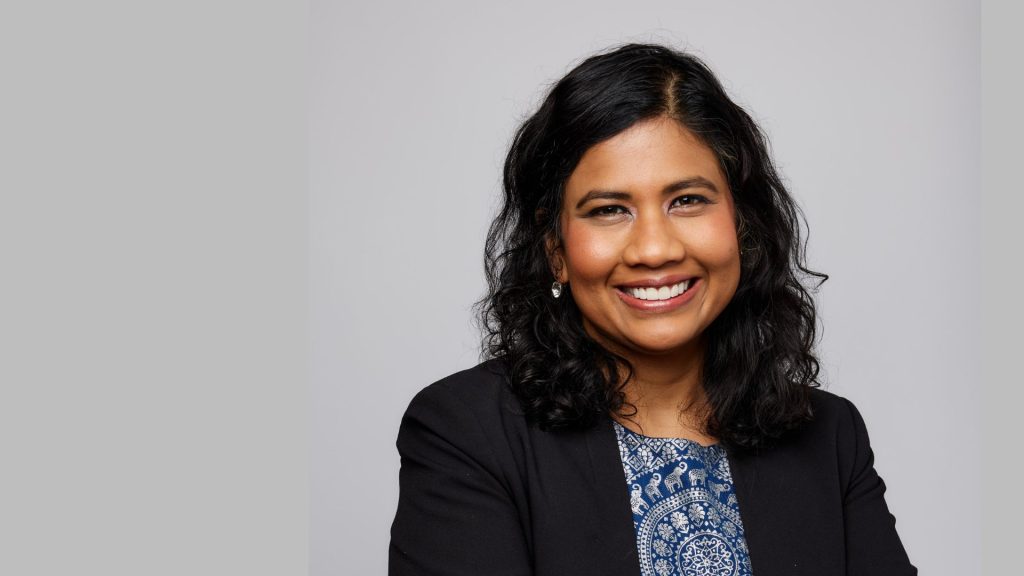Dr. Christian Spies, center, an interventional cardiologist at Sutter’s Alta Bates Summit Medical Center, recently became one of the first in the Bay Area to treat a heart failure patient in their 90s. Pictured with cardiovascular team members Dr. Sonia Garg, left, advanced heart failure cardiologist, and Dr. Mitul Kadakia, interventional cardiologist.
By Lena Kauffman, Vitals contributor
Up until recently, patients whose heart valves began to fail late in life were out of luck. The only treatment available was open heart surgery, which statistically was as dangerous for patients in their 80s and 90s as living with a failing heart valve. The good news is that science is catching up with the needs of these patients, and interventional cardiologists at Sutter Health have embraced new technologies that let them extend people’s lives.
Less invasive, faster recovery
Dr. Christian Spies, an interventional cardiologist at Sutter’s Alta Bates Summit Medical Center in Oakland, recently became one of the first in the Bay Area to treat a heart failure patient in their 90s with the newly U.S. Food and Drug Administration approved EVOQUE tricuspid valve replacement system. Instead of opening the chest, which involves breaking the breast plate and temporarily stopping the heart in an open-heart surgery, the EVOQUE tricuspid valve replacement is threaded up to the heart through a small incision in the groin and placed into the heart while it is still beating.
The procedure itself is painless and very quick.

Dr. Spies, interventional cardiologist at Sutter’s Alta Bates Summit Medical Center
“Now that we have a safer way to treat them, we can ensure that not only may they live longer, but they will likely also have a better quality of life and be able to enjoy many more important life moments with their loved ones,” Dr. Spies said.
Heart valve therapy has had a revolution in the past five to ten years with more and more surgeries being done with catheters threaded to the heart and diagnostic imaging used to guide the placement of valve repairs or replacements. The EVOQUE is for the tricuspid valve of the heart, which separates the upper and lower parts of the heart on the right side. While critical for ensuring blood flows the right direction from the upper part of the heart (the atrium) into the lower part (the ventricle), it is sometimes called the “forgotten valve” because symptoms of it starting to fail can be very subtle at first and may go unnoticed.
Strong collaboration saves lives
According to Dr. Spies, the success of the first EVOQUE tricuspid valve replacement system surgery at Sutter’s Alta Bates Summit Medical Center is a direct result of collaboration from the entire cardiovascular team, including Dr. Sonia Garg, advanced heart failure cardiologist; Dr. Michael Tsang, cardiologist; Dr. Mitul Kadakia, interventional cardiologist; Dr. David Daniels, interventional cardiologist; and Dr. Rajan Shah, electrophysiologist. Drs. Daniels and Kadakia assisted during the surgery and Dr. Shah stood by in case any issues developed with the patient’s pacemaker.
“The collaborative nature of cardiology at Sutter is one of the real strengths of our program and how we are able to provide our patients with some truly cutting-edge treatment options for complex cases that up until recently would simply have been untreatable,” Dr. Spies said.
How Tricuspid Valve Replacement Works
The reason the delicate tricuspid valve can be replaced without needing open-heart surgery is due to both advances in less invasive surgery and in artificial heart valves. Here’s how it is done:
1. One small incision is made in the groin to access a larger vein leading to the heart.
2. Next, doctors use ultrasound imaging to thread the folded up artificial EVOQUE tricuspid heart valve all the way to the heart with a thin flexible catheter.
3. Once the EVOQUE valve has reached the heart, it is deployed over the leaking natural tricuspid valve, effectively taking its place. There is no cutting into the heart required and the procedure is done while the heart is still beating.
4. With the new artificial valve in place, the catheter is withdrawn and the small hole in the groin made to access the heart is sewn up.
Other than the groin incision, the procedure is painless and very quick. Patients can also get up and walk very soon after their surgeries, which reduces risks like blood clots forming after surgery.





